Escape the City: Top Day Trip Ideas from New York City
We love quick escapes that let us swap the subway for shoreline, trails, or museum halls without overplanning.
In a single outing we can reach Fire Island by LIRR to Bay Shore and a short ferry ride, stroll car-free boardwalks, and find the Sunken Forest at Sailors Haven. A train run up the Hudson opens river towns, historic estates, farm-to-table dining, and wineries like those on the North Fork.
For hikers, Cold Spring and Mohonk offer classic climbs and sweeping views. For art lovers, Beacon’s Dia:Beacon delivers big installations in a converted factory. Montauk gives surf lessons, a 200-year-old lighthouse, and broad ocean views when we need to be at the water’s edge.
We focus on smart timing and the best way to go—train, ferry, or car—so we spend more time exploring places and less time commuting. Below are the practical highlights and can’t-miss stops to help us plan, whether we want beaches, wine tastings, or high peaks.
Key Takeaways
- Pick a route by transport: train, ferry, or car to save time.
- Match the season to the activity: beaches in summer, foliage in fall, trails year-round.
- Anchor outings with marquee spots like Dia:Beacon, Sunken Forest, and Montauk Lighthouse.
- Balance free outdoor time with small-town dining or optional museum admissions.
- Plan realistic itineraries with booking tips and travel times to maximize exploration.
How We Pick the Best Day Trips: What to Expect in a Perfect NYC Escape
Our top picks balance total travel time and on-the-ground hours so we see more and rush less.
Travel windows matter. We aim for routes that keep total commute under two hours each way so the bulk of the day is for exploring. Typical runs—70–90 minutes on Metro-North to Cold Spring or Beacon, or about 90 minutes via LIRR plus a timed ferry to Fire Island—fit this sweet spot.
Schedules, seasons, and simple logistics
Direct train access is a game-changer. When connections are easy, we lose less time in stations and have more minutes to hike, sip, or browse shops.
Seasons shape the plan: spring wildflowers, summer beaches and late sunsets, peak fall foliage, and crisp winter museum hours. We prefer towns with compact centers so cafés and markets sit near the station.
Book timed tours and ferries in advance when possible to avoid sold-out slots and long waits.
| Priority | Why it matters | Example | Typical time |
|---|---|---|---|
| Travel under 2 hours | More exploration, less transit | Beacon, Cold Spring | 70–90 minutes |
| Direct train access | Simpler connections | Metro-North, LIRR | Few transfers |
| Season fit | Maximizes views and activities | Hudson estates, Storm King | Varies by season |
| Food & culture | Local markets and tours add texture | Farm-to-table spots, historic tours | Allow extra hours |
Hudson Valley Highlights: River Views, Art Towns, and Farm-to-Table Dining
We love how the Hudson Valley pairs wide river views with antique-forward towns and lively food scenes. A short ride north brings estate gardens, gallery-lined main streets, and markets that show off local producers.
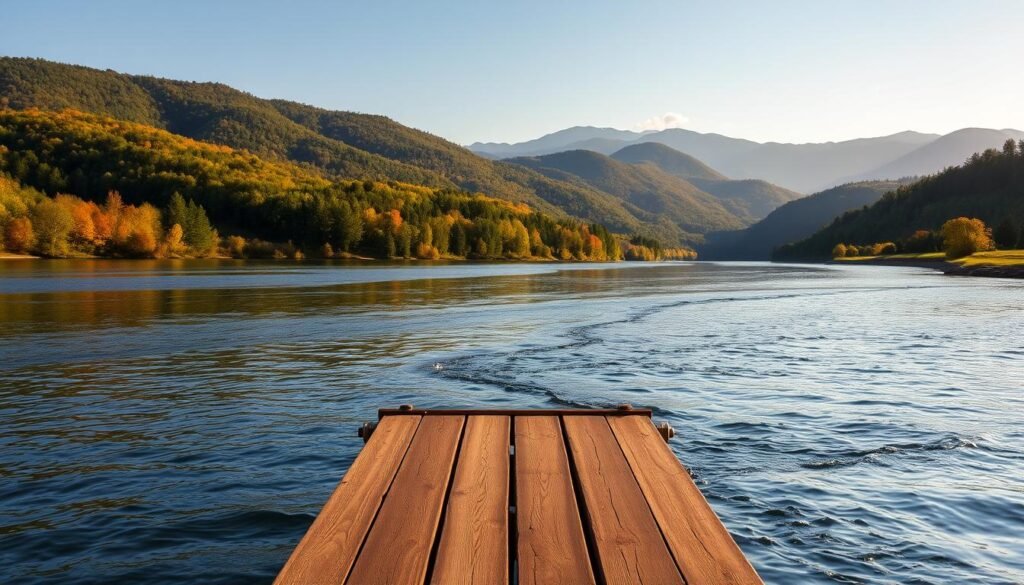
Historic estates along seasonal tours
Stately buildings like Boscobel and Livingston Mansion open their grounds on a schedule. We plan around timed tours so we can stroll gardens and then linger at a cliffside overlook.
Where to eat and sip
Farm-to-table lunches, small wineries, and breweries keep driving low and enjoyment high. The Omega Institute in Rhinebeck and Hudson’s cafés make good anchors for a relaxed meal.
Best times for foliage, festivals, and markets
Fall brings peak color and harvest events; summer is for outdoor concerts and markets; spring offers blossoms and fewer crowds. We mix one ticketed visit with open wandering so our plans stay flexible.
“We end the evening with a quiet look over the hudson river at dusk — a simple close to a full, local day.”
| Focus | Example | Why it works | When |
|---|---|---|---|
| Historic estates | Boscobel, Livingston Mansion | Guided tours reveal architecture and gardens | Seasonal weekends |
| Food & drinks | Farm-to-table restaurants, local wineries | Short drives, fresh regional menus | All seasons |
| Main street exploration | Hudson, Kingston | Shops, galleries, cafés within walking distance | Festival weekends |
| Scenic stops | Cliff overlooks, shoreline walks | Sunset viewpoints that frame the river | Evenings |
Cold Spring & Breakneck Ridge: Classic Hudson Highlands Adventure
A 70-minute Metro-North ride puts us in Cold Spring, a compact town with serious outdoor payoff. We aim for an early start to beat crowds and to enjoy cooler hiking hours on the ridgelines.
Breakneck Ridge vs. Bull Hill: which trail fits your time and skill
Breakneck Ridge is a steep, hands-on scramble with sweeping views over the Hudson Highlands. It rewards effort but tests balance and stamina.
Bull Hill (Mt. Taurus) is a steadier option. The ascent is gentler and still delivers excellent outlooks with less exposure to rock scrambling.
- Choose Breakneck for a full-on scramble and big panoramas; pick Bull Hill for a steadier climb.
- Start early and catch the first train so we’re on the trail in cool morning time.
- Pack water, grippy shoes, and a realistic plan—these trails are no joke.
Main Street strolls: restaurants, antique shops, and river views
After the hike we take Main Street slow. Preserved buildings house cafés, boutiques, and antique shops that make a relaxed afternoon.
We check Boscobel’s calendar for concerts or the Hudson Valley Shakespeare Festival, and we stop at Stonecrop Gardens for calm paths and planted displays.
“On clear days the lookout frames Storm King, Bannerman Castle, and the Catskills—bring a picnic and savor the scope.”
| Priority | Why it matters | Quick tip |
|---|---|---|
| Timing | Less heat, fewer people | Morning start, midday Main Street |
| Gear | Safety on rock sections | Sturdy shoes, water, map |
| Backup plan | Short on time or crowded | Cornish Estate ruins loop or Little Stony Point river walk |
We monitor schedules back to new york so the return time stays smooth. A picnic at a lookout or a riverside dessert on Main Street makes this a memorable, budget-friendly outing.
Beacon’s Culture Hit: Dia:Beacon, Riverfront Walks, and Small-Town Vibes
An 80-minute train run puts us in a town where former industrial buildings hold massive modern works and a relaxed riverfront awaits.
![]()
We head straight to Dia:Beacon to soak in post-1960s installations. The museum sits in a former Nabisco factory and features more than 34,000 square feet of skylights. That light makes large-scale pieces read differently than they do in tighter galleries.
We allow 90–120 minutes for the galleries, then grab coffee and browse Main Street shops. Small tours or artist talks can add context, so we check the program and slot one in if it fits our time.
Art first, sunset second: how we plan a perfect afternoon
- Ride the train late morning and arrive fresh for the museum.
- Sample local flavor with a tasting at Dennings Point Distillery.
- Aim for golden hour at Long Dock Park for riverfront views and photos.
“We linger at a gallery that speaks to us, then wander to a nearby restaurant for a menu built on Hudson Valley produce.”
| Stop | Why it matters | Typical time |
|---|---|---|
| Dia:Beacon | Light-filled galleries and seasonal shows | 90–120 minutes |
| Main Street | Shops and cafés within walking distance | 30–60 minutes |
| Long Dock Park | Sunset river views | 30 minutes |
We keep an eye on return trains to new york city and tuck a bakery stop into the plan for a sweet end to the day. A flexible schedule makes the small area feel like a full escape without rushing.
day trip ideas from NYC: Quick Picks by Interest and Season
We group quick escapes by what we want to feel—ocean breeze, summit air, gallery light, or a glass by the water. That approach helps us pick the right route and keeps the whole getaway relaxed and efficient.
Summer ocean escapes: Fire Island and Montauk
Summer calls for shoreline. Fire Island offers car-free beaches and boardwalks through the Sunken Forest. Montauk gives surf lessons at Ditch Plains, classic lighthouse views, and Hither Hills for long beach walks.
Leaf-peeping and hikes: Mohonk Preserve, New Paltz, and Cold Spring
For crisp air and color in fall, Mohonk Preserve’s 8,000 acres deliver miles of trails. We add a New Paltz café stop or Cold Spring’s ridgelines when we want big outlooks and cozy refueling.
Art-forward days: Beacon and Storm King
Culture days pair Dia:Beacon’s light-filled galleries with Storm King’s rolling sculpture fields for a full, outdoor-and-indoor art experience.
Wine and water views: North Fork and Greenport
For sipping, we choose Bedell Cellars tastings and Greenport oysters and carousel rides. We match the places to our available time—closer options for shorter hours, longer rides for a richer outing.
- Book ferries and museum entries in advance.
- Plan one meal that highlights local producers.
- Leave an hour to wander—serendipity is the best souvenir.
Fire Island Getaway: Car-Free Beaches, Boardwalks, and Bay Sunsets
A short rail ride and a ferry put us onto Fire Island’s sandy spine, where boardwalks and bay sunsets set the pace.
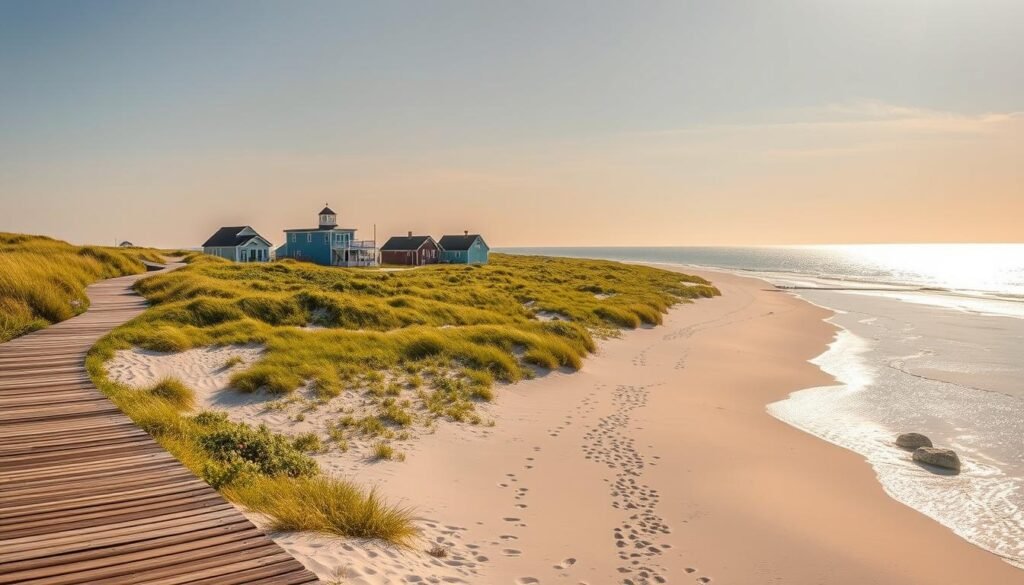
How to get there: We take the LIRR to Bay Shore, then a 25–30 minute ferry. Don’t drive onto the island — the car-free rhythm is part of the charm and the smoothest way to arrive relaxed.
Best swimming spots and the Sunken Forest
We aim for lifeguarded beaches at Sailors Haven, Watch Hill, Davis Park, and Atlantique for safe swims and long shoreline walks.
The Sunken Forest deserves time: an elevated boardwalk winds through a rare maritime holly grove just behind the dunes.
Evenings and island vibes
Ocean Beach and Kismet offer buzzy bars and patios; Cherry Grove and the Pines are lively LGBTQ+ hubs. Water taxis hop between communities so we can sample different scenes.
- Pack light and wear sandals—boardwalks link the villages.
- Respect ferry minutes and schedules; plan the return to keep evenings mellow.
- Bring cash for small eateries and taxis, and add an early or late ocean stroll to enjoy quieter hours.
“We linger for bay sunsets, then catch the ferry back to the mainland with the harbor lights ahead.”
North Fork Wine Trail & Greenport: Sips, Shops, and Seaside Strolls
Our plan centers on easy pacing: two tastings, an unhurried lunch, and enough time to browse a harbor village before sunset.
Top pours start at Bedell Cellars, then we add Woodside Orchard for crisp local cider. A balanced tasting route keeps flavors varied and the palate fresh.
Greenport favorites
We walk Main Street to hunt for vintage finds like The Times Vintage, then stop at Little Creek Oyster Farm & Market for oysters and seasonal plates.
Photogenic stops
Lavender by the Bay in nearby East Marion is worth penciling in when it blooms. Fields of purple make a calm, fragrant pause and great photos.
- Book tastings ahead and pick a designated driver or shuttle to save time.
- Plan lunch at restaurants that highlight Long Island producers so the food matches the pours.
- Leave room for a carousel ride and sunset on the pier—those harbor views close the outing well.
“We keep the day flexible and let the pace of the North Fork set itself—good wine, good company, and coastal light.”
Mohonk Preserve & New Paltz: Gunks Trails, Carriage Roads, and Cozy Cafés
We begin at the Mohonk Preserve visitor center to match routes to our energy and the weather. The staff helps us pick a plan so we make the most of limited time on the ridge.
Miles of routes for hiking, biking, horseback riding, and climbing
Mohonk Preserve spans about 8,000 acres in the Shawangunks with roughly 40 miles of mixed-use trails. We choose carriage roads when we want gentle grades and long views.
For a more physical outing, classic Gunks scrambles and climbing routes give big outlooks and technical moves. Entrance fees support conservation and trail maintenance, so we budget that into our plan.
New Paltz history and the perfect post-hike food stop
After exploring the grounds, we roll into New Paltz to stroll preserved Huguenot Street. The town is compact, so a cozy café or tavern is easy to find.
- Start at the visitor center to match route difficulty to our time.
- Mix carriage roads with a short scramble for varied terrain.
- Refuel with local ingredients—a hearty plate captures true new york state flavor.
“Clear weather makes the ridgelines sing; bring layers and check the clock so the return is calm.”
| Feature | What to expect | Quick tip |
|---|---|---|
| Visitor Center | Route advice, maps, permits | Plan by time and skill |
| Carriage Roads | Gentle grades, long viewpoints | Good for bikes and horses |
| Climbing/Scrambles | Steep, technical sections | Bring proper shoes and experience |
| New Paltz | Historic Huguenot Street, cafés | Refuel with local fare |
Montauk at “The End”: Surf Breaks, Lighthouses, and Ocean Trails
At the far end of Long Island we find surf schools, sweeping headlands, and a two-century-old lighthouse that crowns the coast. Montauk packs active options and quiet shoreline moments into a single, manageable outing.
Learn to surf and gear up
We head straight to Ditch Plains for lessons and rentals at the family-run Air and Speed Surf Shop. They rent boards and wetsuits and run beginner-friendly lessons that get us standing or paddling with confidence.
Park trails, birdwatching, and lighthouse panoramas
Midday we plan a trail at Montauk Point State Park or Hither Hills for crisp ocean views and wildlife spotting. The historic lighthouse sits nearby; we walk the grounds for sweeping coastal photos and a bit of local history.
- Timing: Budget 2–3 hours each way by car in peak summer and start early to avoid traffic.
- Other ways: Consider a train or coach if we prefer not to drive, then use taxis locally.
- Practical tips: Pack layers and a towel, watch tide and surf conditions, and leave enough hours to reset gear before the return.
“We end with a final shoreline walk in the softened light — Montauk’s quiet, perfect close.”
Shelter Island Slowdown: Quiet Shores and the Mashomack Preserve
We slow our pace on Shelter Island, where short ferries set the rhythm and quiet shores invite a softer itinerary. The island blends North and South Fork vibes, and its compact village life keeps plans simple.

Ferry tips and the best beach for sunset
We plan ferry timing and arrive with a light day pack to match the island’s gentle tempo. Crescent Beach is our golden-hour anchor—perfect for relaxed swimming and postcard sunsets.
Mashomack’s water and woodland trails
Mashomack Preserve protects more than 2,000 acres of woodlands, marsh, and creeks. We walk its water and woodland trails, watching for osprey and shorebirds along quiet coves.
- Alternate short loops and overlooks so the area reveals itself without a heavy itinerary.
- Bring insect repellent and sun protection—the state preserve’s edges can be buggy.
- Carry out what we carry in and leave buffer time for ferries; lingering is the point here.
“We snap a last look over the bay from the dock to lock in the views before heading back to new york.”
We choose an easy waterside picnic or a short village bite so the town stays tranquil. This quiet spot rewards repeat visits and different seasons, and we often make a note to return.
Storm King & Sleepy Hollow: Art in the Fields and American Legends
Storm King spreads across rolling meadows where sculpture and sky trade places, and nearby Sleepy Hollow folds in history and legend.
Start with a plan. The center spans roughly 500 acres, so we catch the tram to map our route around the grounds. Then we walk or rent bikes to reach must-see sites at our own pace.
Planning your route: tram, bikes, and must-see sculptures
We begin with the tram for orientation and pick two or three large works to focus on so our day stays relaxed. Pack water and sun protection; open fields offer little shade on warm afternoons.
History, taverns, and seasonal tours
After the sculptures we cross into Sleepy Hollow and Tarrytown to visit hands-on buildings like Philipsburg Manor and Washington Irving’s Sunnyside. Tours and legend walks add context when their schedules fit our time.
Refuel and browse. Bridge View Tavern serves pub fare with a river view, and nearby main street shops make for an easy stroll between art and history.
“We end with a quiet river pause at sunset — a perfect close from sculpture meadows to storied banks.”
| Stop | Why visit | Typical time | Quick tip |
|---|---|---|---|
| Storm King tram | Maps the 500-acre site for efficient walking | 20–30 minutes | Pick 2–3 sculptures to avoid overwalking |
| Meadow walks | Monumental outdoor installations | 60–90 minutes | Bring water and sun protection |
| Philipsburg Manor | Living-history buildings and demonstrations | 45–60 minutes | Check tour times in advance |
| Tarrytown Main Street | Shops and cafés between sites | 30–45 minutes | Save time to browse local shops |
We track distances and time between stops because hills can make short walks longer. If we drive, we watch traffic toward new jersey crossings; otherwise we align with train schedules and plan a return that keeps the evening calm.
Go Big for a Day: Adirondack Outlooks or a Culture Run to Philadelphia
Some days call for big horizons: we can chase Adirondack summits or make a fast culture run down to Philadelphia.
Adirondacks sampler: the region spans roughly six million acres and rewards an early start. We plan several hours each way and pick one core highlight—an easy summit in the High Peaks, a lakeside walk, or The Wild Walk canopy experience near Tupper Lake.
We keep expectations realistic. One or two experiences, a café stop, and sensible parking or permit checks make the long way north worth it. Respect state rules, trail etiquette, and pack sturdy shoes for forest and rocky outlooks.
Philadelphia in a day by train
Fast and compact: Philadelphia sits about 90 minutes by train from new york city. We book a morning rail, then walk Old City in minutes between the Liberty Bell, Independence Hall, and cobbled streets.
Lunch is practical and joyful: a cheesesteak at Geno’s or Pat’s, then a museum or riverfront stroll before the return. Watch hours, lines, and security checks so the schedule stays smooth.
“We lean into style and mood—outdoor grandeur upstate or urban culture downstate—so the day feels cohesive.”
- Choose one big way north or south so pacing stays calm.
- Pack light: layered clothing, ID, and comfortable shoes.
- Track hour-by-hour timing and transit windows; minutes matter on tight schedules.
Either route sends us home tired and happy, already planning the next trip with the same blend of practical timing and relaxed style.
Conclusion
The region rewards simple rules: pick one anchor, add one small extra, and travel light so we have more time to enjoy views and local flavor.
We match transport to purpose: trains for art towns like Beacon and new paltz, ferries for fire island beaches, and cars for wider loops that include the hudson river sites or farther reaches.
Leave room for serendipity: a bookstore find, bakery stop, or a late harbor walk often becomes the best memory. Note traffic at new jersey crossings and book key tickets in advance.
Plan the return to york city, write down three future trips, and go—new york keeps great escapes within easy reach, every way.
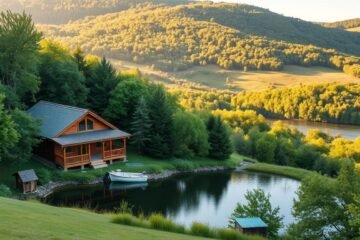
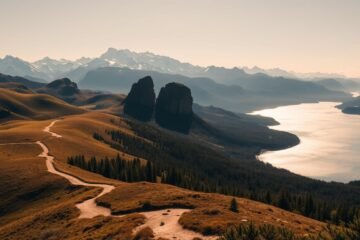
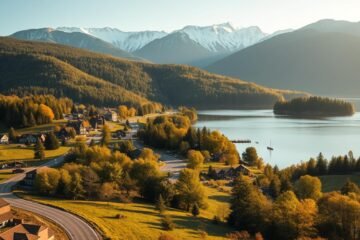
0 Comments